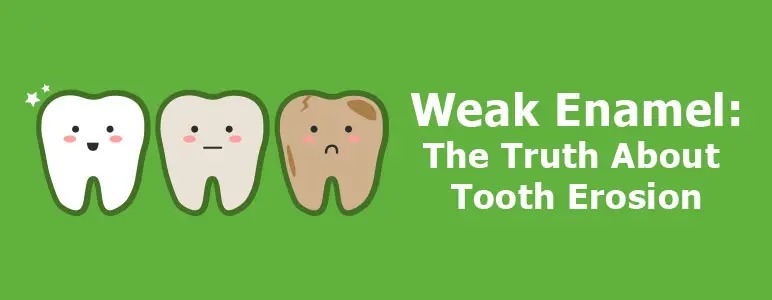
Before you slurp down your next soda, consider this: Soda is public enemy number one when it comes to dental enamel erosion, a common and often painful condition.
Enamel loss often starts as a simple annoyance and grows into a serious dental problem. Tooth enamel is a precious substance that gets worn down by the foods and drinks we consume — including but not limited to — soda and other sugary beverages.
If you want to protect your teeth and look out for your long-term dental health, it’s important you learn:
A lot of patients in our Glendale, AZ, practice want to know the best way to protect their teeth from this condition. It’s smart to teach these habits to your children as well, since up to 37 percent of U.S. kids 11-13 suffer from enamel erosion.
Here’s our comprehensive guide to recognizing, treating and preventing tooth erosion.
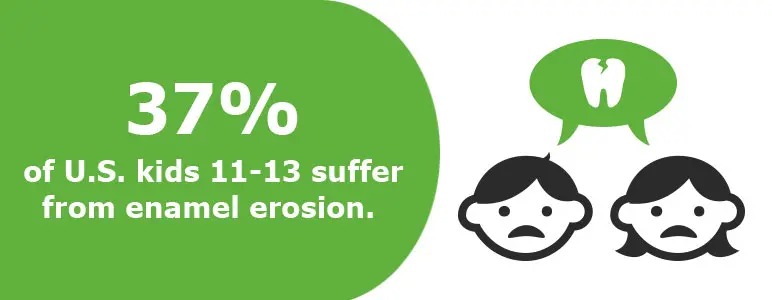
Before we start to explore tooth erosion, you may first be wondering what tooth enamel is and why it’s important. Tooth enamel is a dense mineral that surrounds the crown of every tooth. Think of this enamel as the moat and your tooth as the castle. Just as a moat protects the castle from unwanted invaders, tooth enamel protects the tooth from foreign substances that can hurt it, such as sugar and acid.
Tooth enamel has a number of distinctive features:
Since enamel is a mineral, it does not grow back. When it has been damaged, such as a crack or a chip, that loss becomes permanent. As hard as tooth enamel is, it can sustain a lot of damage, and erosion ranks as the most common type of tooth enamel damage.
Acid ranks as the main cause of tooth enamel loss. This substance eats away at tooth enamel, eroding it over time. This leaves the tooth vulnerable and without its main source of protection.
The mouth produces acid in a number of ways. The most common method comes from the food we eat. But that’s not all — other contributors to acid production in the mouth include:
Dentists have even found environmental factors also can heighten acid production in the mouth. If your mouth produces a lot of friction, you have a lot of stress, or your teeth simply have a lot of wear on them, your acid production may soar.
The way you brush your teeth can also contribute to enamel loss. When you brush too hard or too much, you wear away the enamel, causing your teeth to become sensitive.
Not all enamel loss is preventable. In addition to genetic conditions, weak enamel may also be caused in utero. Some babies do not form strong teeth, either because of the mother’s nutritional habits during pregnancy or for other reasons. No matter how you change your diet or address other causes of tooth erosion, this one can’t be undone.
Tooth enamel erosion has also been linked to celiac disease, a condition in which the gut can’t tolerate gluten. The exact connection between tooth erosion and celiac remains murky. Researchers have theorized it may have to do with the malabsorption issues in the small intestine, which could prevent teeth from getting the nutrients needed for proper development and lead to erosion.
Foods and drinks with high acid content are the leading cause of dental enamel erosion. The irony, of course, is that this type of enamel erosion can be prevented with tweaks to your diet.
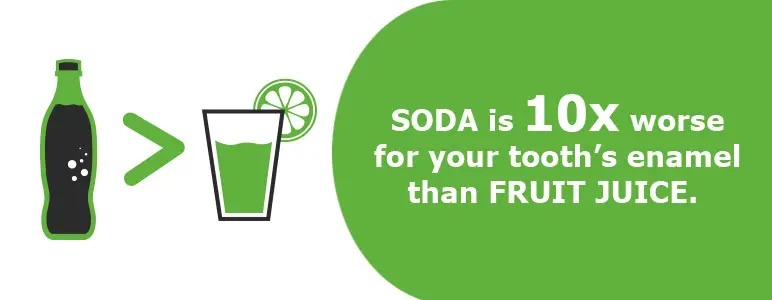
These foods and drinks produce the most acid and thus do the most damage to your tooth enamel:
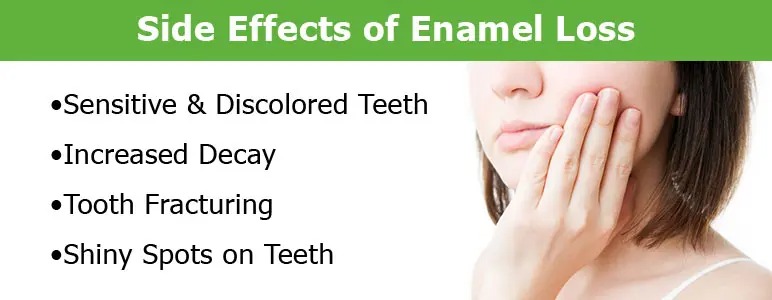
Now that you understand what causes enamel erosion, you may be wondering: How can I tell if my tooth enamel is eroding? There are a number of side effects from erosion.
Tooth Sensitivity
The most common side effect from teeth erosion is tooth sensitivity. This is caused by the reduction of the tooth’s protective coating. Your teeth may hurt when you eat very hot or cold foods, when you brush, or when your gumline is exposed to air.
Yellow Teeth
Enamel erosion often results in what appears to be discoloration. In reality, the enamel has worn so thin you are seeing the underlying dentine of your teeth, which is yellow.
Uneven Edges on the Teeth
When your tooth enamel wears away, it can result in rough edges. This can eventually lead to chips and cracks.
Shiny Spots on the Teeth
These smooth surfaces indicate erosion. They’re a sign your teeth have lost minerals.
Increased Tooth Decay
As you might imagine, when the protective surface on your teeth gets worn down, your teeth become more susceptible to cavities.
Tooth Fracturing
As enamel grows weaker, the structure of the teeth can break down. Cracks and fractures of the teeth happen more frequently.
See-Through Teeth
The more the enamel has been worn down, the thinner your teeth grow, until they appear almost transparent. Your teeth may also look duller because their natural shine has been worn away.
Can Tooth Enamel Be Restored?
Unfortunately, there’s no way to “restore” tooth enamel. Enamel doesn’t have living cells, which means there is no way it can repair itself. Any damage done to the enamel on your teeth is permanent.
However, while you cannot replace eroded tooth enamel, there are ways you can treat the damaged area. While tooth enamel can’t be rebuilt, your teeth can be taken care of in other ways.
Though enamel can’t be replicated, dentists can offer a bit of assistance in repairing the worn-down mineral. There are two main ways to treat eroded teeth:
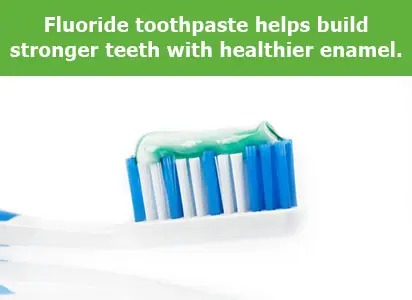
Tooth enamel erosion may not seem like a pressing problem. If you lost a filling or had a painful cavity, you’d head straight for the dentist, yet most people don’t feel such immediate action is necessary for the repair of tooth enamel. Despite this relative lack of urgency, you should consider consulting with your dentist as soon as possible.
Tooth erosion will only become worse when you are not taking any steps to prevent it. If you do not know which foods to avoid or realize you’re brushing your teeth too vigorously and creating weak enamel, you won’t do anything to change these habits. Your dentist can tell you what to do to stop the cycle of tooth erosion.
While you’re discussing what causes enamel loss, you may also decide it’s a good time to get a fluoride treatment. Though most people think of these as something for kids, adults can also benefit from fluoride, which helps build stronger teeth with healthier enamel.
One question many patients in our Peoria, AZ, office ask us is how they can prevent tooth erosion in the future even after damage has been done. We suggest using these tips to limit acid production in the mouth and help protect your precious teeth.
Eliminate Sugary Drinks
Yes, this one should be obvious, but it bears repeating: Soda and fruit juices are poisonous to your teeth. If you can replace even one or two of these drinks each day with water, you’ll be doing a great service to your teeth.
Don’t Swish Your Drinks
When you swirl liquid around in your mouth, especially acidic liquid such as soda or orange juice, you’re exposing even more of your mouth to the acid that causes tooth enamel breakdown. Avoid swishing your drinks. Even better: Use a straw so the liquid touches as few teeth as possible before being swallowed.
Get Treatment for Outstanding Medical Conditions
Stomach acid corrodes the teeth quickly. When you suffer from a digestive disorder, such as acid reflux, or an eating disorder, such as bulimia, this stomach acid frequently burns up the esophagus and into your mouth, where it comes in contact with your teeth. If you have an outstanding medical condition that is impacting your dental health, get the assistance you need to help your entire body heal.
Cut Back on Snacks
Frequent snacking throughout the day can lead to greater acid production. If you’re a grazer who prefers snacks to meals or you grab food when you’re bored, try to eliminate one or two of your daily snacks to cut back on acid production in the mouth.
Rinse Your Mouth After Eating
We explain to our patients that brushing your teeth too soon after eating acidic food can actually make the damage worse, because you’re spreading the acid around your mouth. Instead, gently wash out your mouth with water or mouthwash after eating. Then, an hour after you’ve finished eating, take out your toothbrush.
Chew Sugarless Gum
Sugar-free gum can help clear away acid remaining in your mouth after a meal. Choose a gum with xylitol, which has been shown to stop the growth of cavity-causing bacteria in the mouth.
Increase Your Dairy Intake
You build strong teeth with calcium, and dairy products brim with it. Plus, dairy products are sticky and form a film over your teeth that lingers after you eat them, helping to protect enamel against acid.
Drink Tea
You have probably heard about the health benefits of green and black tea, which are high in antioxidants. But did you know tea can also help prevent tooth erosion? This all-natural beverage has a high PH level relative to most other drinks, and it can neutralize acid in your mouth produced by other food and drinks.
Use Toothpaste and Mouthwash With Fluoride
Fluoride is like a booster shot for your teeth. It helps to strengthen enamel, offering further protection against acid or anything else that can wear away that protective coating. Choose toothpaste and mouthwash that list fluoride among the ingredients, and make sure your kids do the same. It’s never too early to start building those healthy, tooth-protecting habits.
Get Regular Dental Checkups
The best defense against tooth erosion is a good offense, and that means being proactive with your dental hygiene. Schedule regular dental checkups and biannual cleanings to keep your teeth as healthy as possible. You can also use those appointments to consult with your dentist about other ways to protect your tooth enamel and strategize your tooth erosion treatment.
At AZ Family Dental, we can take care of your entire family and help you in the fight against dental enamel erosion. Contact us today to schedule a checkup at our practice located near Phoenix, AZ.